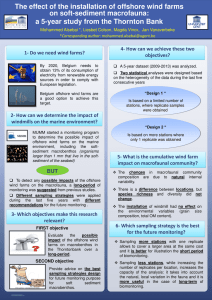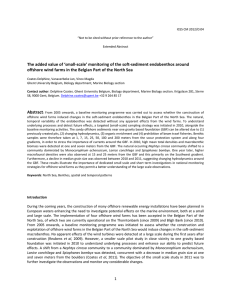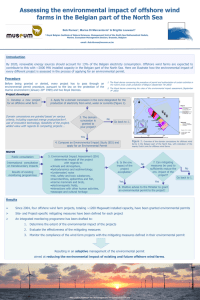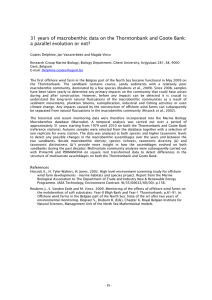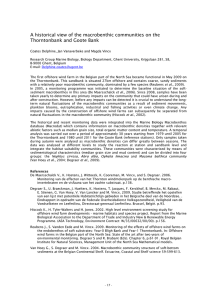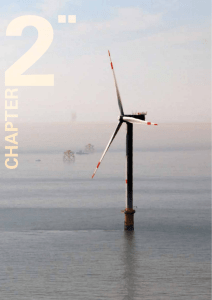A CLOSE UP ON THE SOFT-SEDIMENT MACROBENTHOS AROUND OFFSHORE WIND TURBINES
advertisement
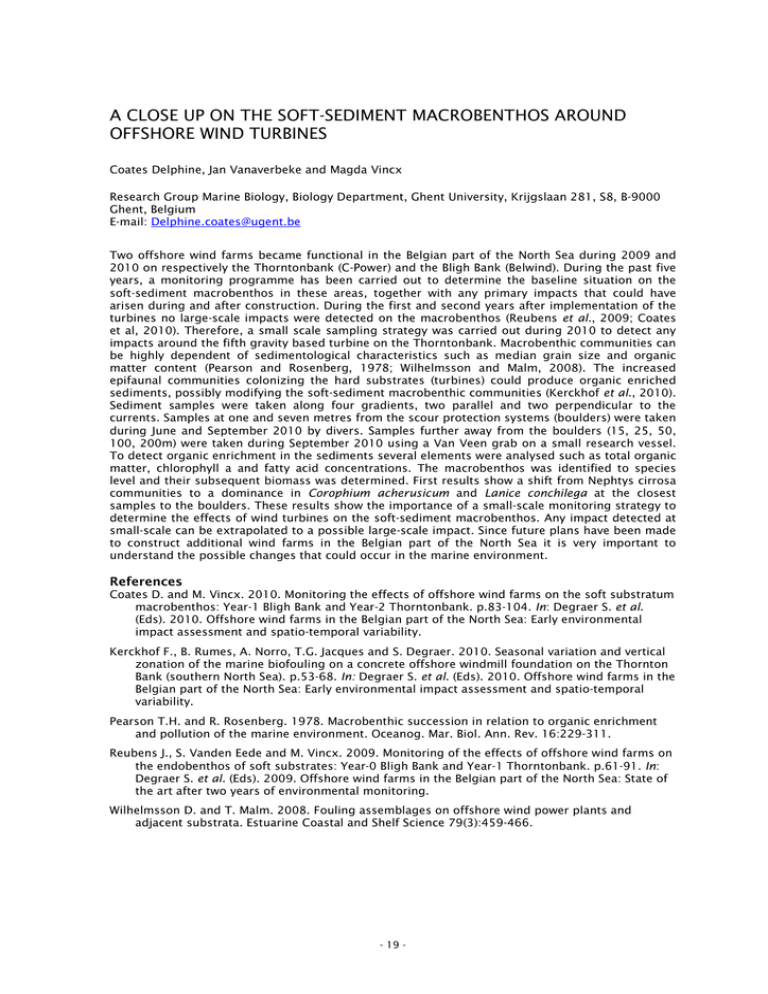
A CLOSE UP ON THE SOFT-SEDIMENT MACROBENTHOS AROUND OFFSHORE WIND TURBINES Coates Delphine, Jan Vanaverbeke and Magda Vincx Research Group Marine Biology, Biology Department, Ghent University, Krijgslaan 281, S8, B-9000 Ghent, Belgium E-mail: Delphine.coates@ugent.be Two offshore wind farms became functional in the Belgian part of the North Sea during 2009 and 2010 on respectively the Thorntonbank (C-Power) and the Bligh Bank (Belwind). During the past five years, a monitoring programme has been carried out to determine the baseline situation on the soft-sediment macrobenthos in these areas, together with any primary impacts that could have arisen during and after construction. During the first and second years after implementation of the turbines no large-scale impacts were detected on the macrobenthos (Reubens et al., 2009; Coates et al, 2010). Therefore, a small scale sampling strategy was carried out during 2010 to detect any impacts around the fifth gravity based turbine on the Thorntonbank. Macrobenthic communities can be highly dependent of sedimentological characteristics such as median grain size and organic matter content (Pearson and Rosenberg, 1978; Wilhelmsson and Malm, 2008). The increased epifaunal communities colonizing the hard substrates (turbines) could produce organic enriched sediments, possibly modifying the soft-sediment macrobenthic communities (Kerckhof et al., 2010). Sediment samples were taken along four gradients, two parallel and two perpendicular to the currents. Samples at one and seven metres from the scour protection systems (boulders) were taken during June and September 2010 by divers. Samples further away from the boulders (15, 25, 50, 100, 200m) were taken during September 2010 using a Van Veen grab on a small research vessel. To detect organic enrichment in the sediments several elements were analysed such as total organic matter, chlorophyll a and fatty acid concentrations. The macrobenthos was identified to species level and their subsequent biomass was determined. First results show a shift from Nephtys cirrosa communities to a dominance in Corophium acherusicum and Lanice conchilega at the closest samples to the boulders. These results show the importance of a small-scale monitoring strategy to determine the effects of wind turbines on the soft-sediment macrobenthos. Any impact detected at small-scale can be extrapolated to a possible large-scale impact. Since future plans have been made to construct additional wind farms in the Belgian part of the North Sea it is very important to understand the possible changes that could occur in the marine environment. References Coates D. and M. Vincx. 2010. Monitoring the effects of offshore wind farms on the soft substratum macrobenthos: Year-1 Bligh Bank and Year-2 Thorntonbank. p.83-104. In: Degraer S. et al. (Eds). 2010. Offshore wind farms in the Belgian part of the North Sea: Early environmental impact assessment and spatio-temporal variability. Kerckhof F., B. Rumes, A. Norro, T.G. Jacques and S. Degraer. 2010. Seasonal variation and vertical zonation of the marine biofouling on a concrete offshore windmill foundation on the Thornton Bank (southern North Sea). p.53-68. In: Degraer S. et al. (Eds). 2010. Offshore wind farms in the Belgian part of the North Sea: Early environmental impact assessment and spatio-temporal variability. Pearson T.H. and R. Rosenberg. 1978. Macrobenthic succession in relation to organic enrichment and pollution of the marine environment. Oceanog. Mar. Biol. Ann. Rev. 16:229-311. Reubens J., S. Vanden Eede and M. Vincx. 2009. Monitoring of the effects of offshore wind farms on the endobenthos of soft substrates: Year-0 Bligh Bank and Year-1 Thorntonbank. p.61-91. In: Degraer S. et al. (Eds). 2009. Offshore wind farms in the Belgian part of the North Sea: State of the art after two years of environmental monitoring. Wilhelmsson D. and T. Malm. 2008. Fouling assemblages on offshore wind power plants and adjacent substrata. Estuarine Coastal and Shelf Science 79(3):459-466. - 19 -
